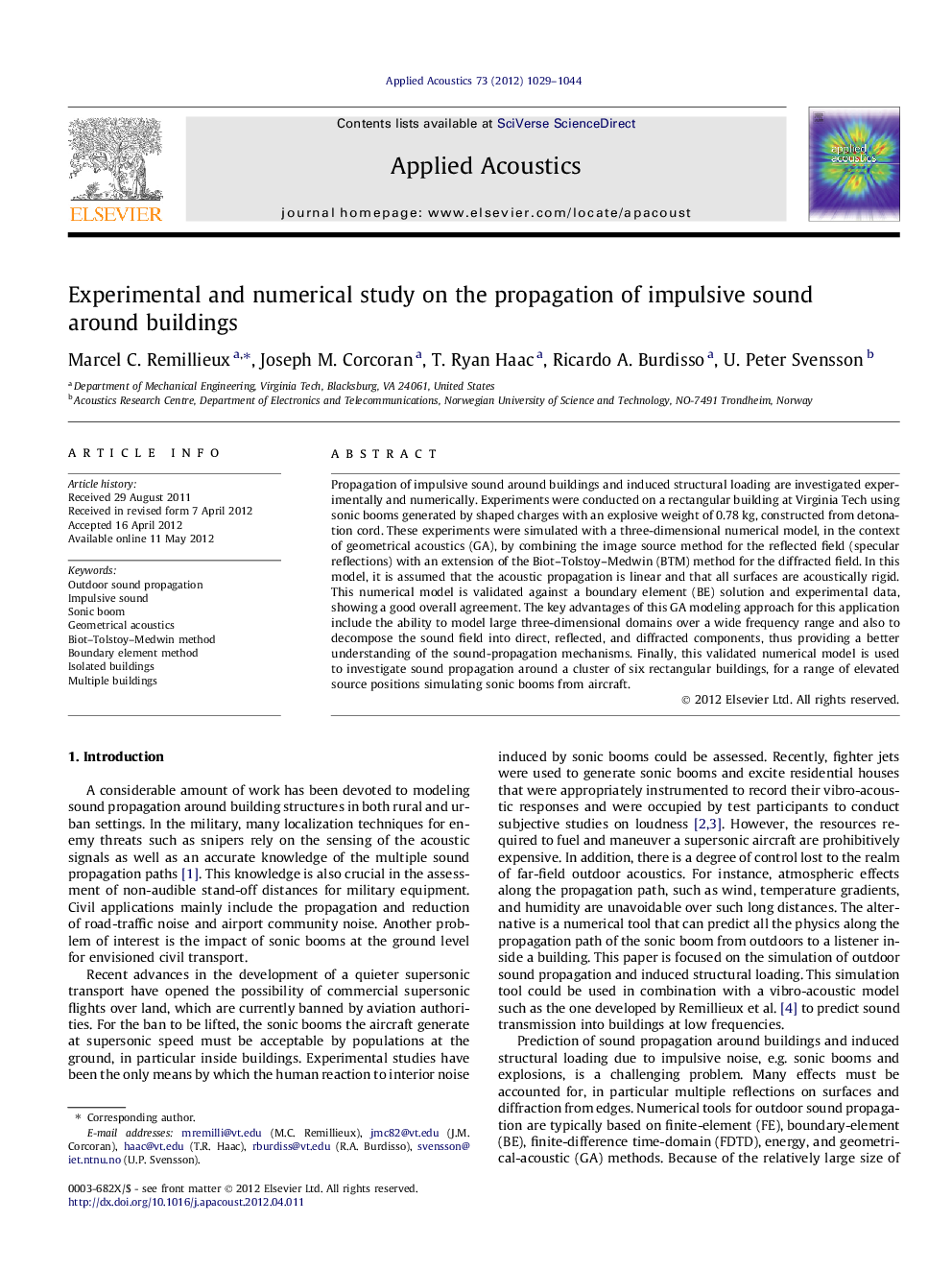| Article ID | Journal | Published Year | Pages | File Type |
|---|---|---|---|---|
| 761340 | Applied Acoustics | 2012 | 16 Pages |
Propagation of impulsive sound around buildings and induced structural loading are investigated experimentally and numerically. Experiments were conducted on a rectangular building at Virginia Tech using sonic booms generated by shaped charges with an explosive weight of 0.78 kg, constructed from detonation cord. These experiments were simulated with a three-dimensional numerical model, in the context of geometrical acoustics (GA), by combining the image source method for the reflected field (specular reflections) with an extension of the Biot–Tolstoy–Medwin (BTM) method for the diffracted field. In this model, it is assumed that the acoustic propagation is linear and that all surfaces are acoustically rigid. This numerical model is validated against a boundary element (BE) solution and experimental data, showing a good overall agreement. The key advantages of this GA modeling approach for this application include the ability to model large three-dimensional domains over a wide frequency range and also to decompose the sound field into direct, reflected, and diffracted components, thus providing a better understanding of the sound-propagation mechanisms. Finally, this validated numerical model is used to investigate sound propagation around a cluster of six rectangular buildings, for a range of elevated source positions simulating sonic booms from aircraft.
